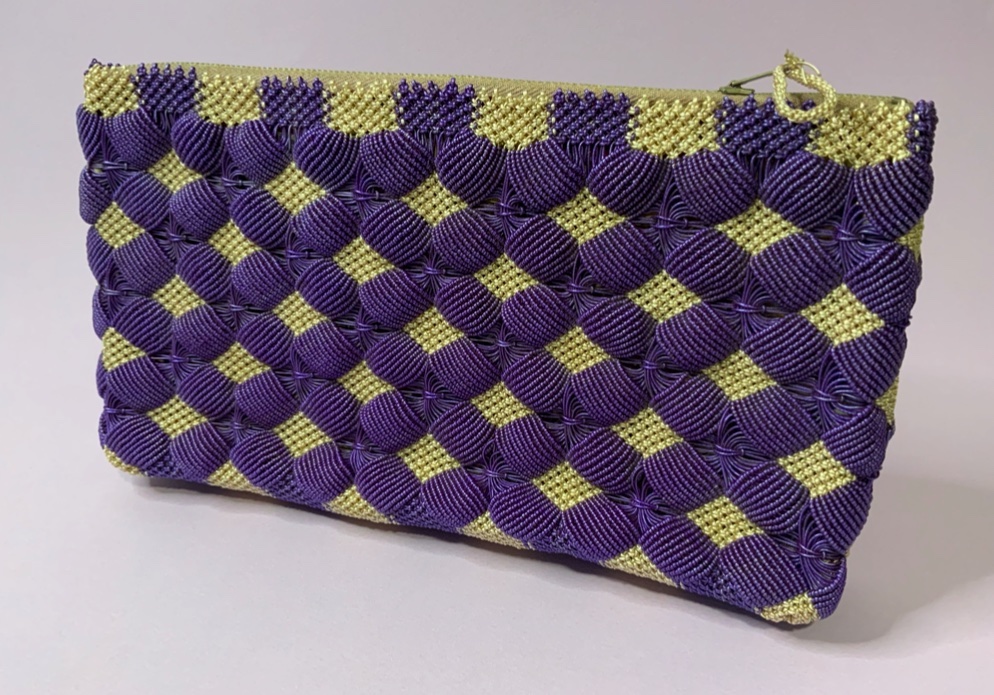A different collector
Richard Wee is fascinated by handbags and pouches, and is sharing his collection in a book.

Richard Wee.
While some of us collect matchboxes, coins and currency, stamps, comic books, antique furniture and vinyl records, not Richard Wee. He has gone down a much different path, one that is paved with handbags and pouches. He loves them so much that he has amassed a collection of more than 90 such bags and pouches.
“I am particularly intrigued by the many beautiful designs and how finely they have been made,” shared the 80-year-old bachelor. A lot of his collection of handbags and pouches are made by knotting plastic strings together, much like macrame. These bags are also often mistaken for beaded creations but they are not.
“One fascinating thing about this craft [of making these] is that it comes in a variety of colours, styles and patterns.” Each bag and pouch in his collection is different. He is clear that he likes to just collect the bags and pouches, and has not made one or observed the entire process of making one.

A pouch from his collection.
He explained that this “folkcraft” gained popularity in Singapore and Malaysia back in the 1960s where many would learn the craft and then go on to make the bags and pouches. Richard added, “Our grandmothers, mothers, sisters and friends would often make them at home but today, they are lost and forgotten with the changing of fashion trends. Not many people today know about this craft or have seen a bag or pouch.” During that time, the pouches were used to store coins and keys, while the handbags and clutches were used for special occasions. There were also bags that were big enough to carry to the market, much like the recyclable bags that we use today.
This knotted technique is also used in making flowers and small animals like dogs and chicken. When Richard was working in the civil service as a clerical officer for 36 years, he remembered seeing many of his colleagues spending their lunchtime in the office making these small animals. But it was only in late 1970s, when he started collecting them “more passionately”.
He would pick them as well as other knotted craft from flea markets and antique shops in Singapore and Malaysia, and would buy only those within his budget. He even was given a bag from Australia courtesy of his friend.
Added Richard, “I was a regular at Sungei Road flea market and most of the items I picked up there were around S$0.50 to S$50. The price would certainly be higher in antique shops. Since these items are made out of cheap plastic string, they were often deemed to be of no value to be collected or kept so the price would be quite cheap. Many of the bags and pouches were even thrown away!” As one man’s loss is another man’s gain as the saying goes, Richard was more than happy to add them to his growing collection.
“I don’t really have a particular favourite bag or pouch as I enjoy all the pieces that I spent time and effort acquiring,” he shared.

His book featuring his collection.
He loves his collection so much that he is sharing it to the public in a 48-page full-colour book called “Precious Plastic Big & Small: The Collection of Richard Wee”. The book contains mainly pictures of his collection. “I hope others will be inspired to share their interests and collections just like me. It would also be a bonus to meet others who are collecting such handcrafted bags and pouches too,” said Richard, who also collects anything Peranakan.
In the meantime, he is still on the lookout for new bags and pouches. He said however, “Although it is getting harder and harder to come by, I still enjoy visiting flea markets, thrift shops, charity bazaars, garage shops and garage sales even if I do not manage to find anything.”
Asked if he has any plans to part with his collection of handbags and pouches, Richard replied that he has no plans to sell any of his collection but doesn’t rule out the possibility of doing so in the future if he receives a good offer “too good to say no”.
** To get your copy of Richard’s book for S$20, order at bit.ly/precPlastic or contact pauseability@gmail.com.

0 Comments